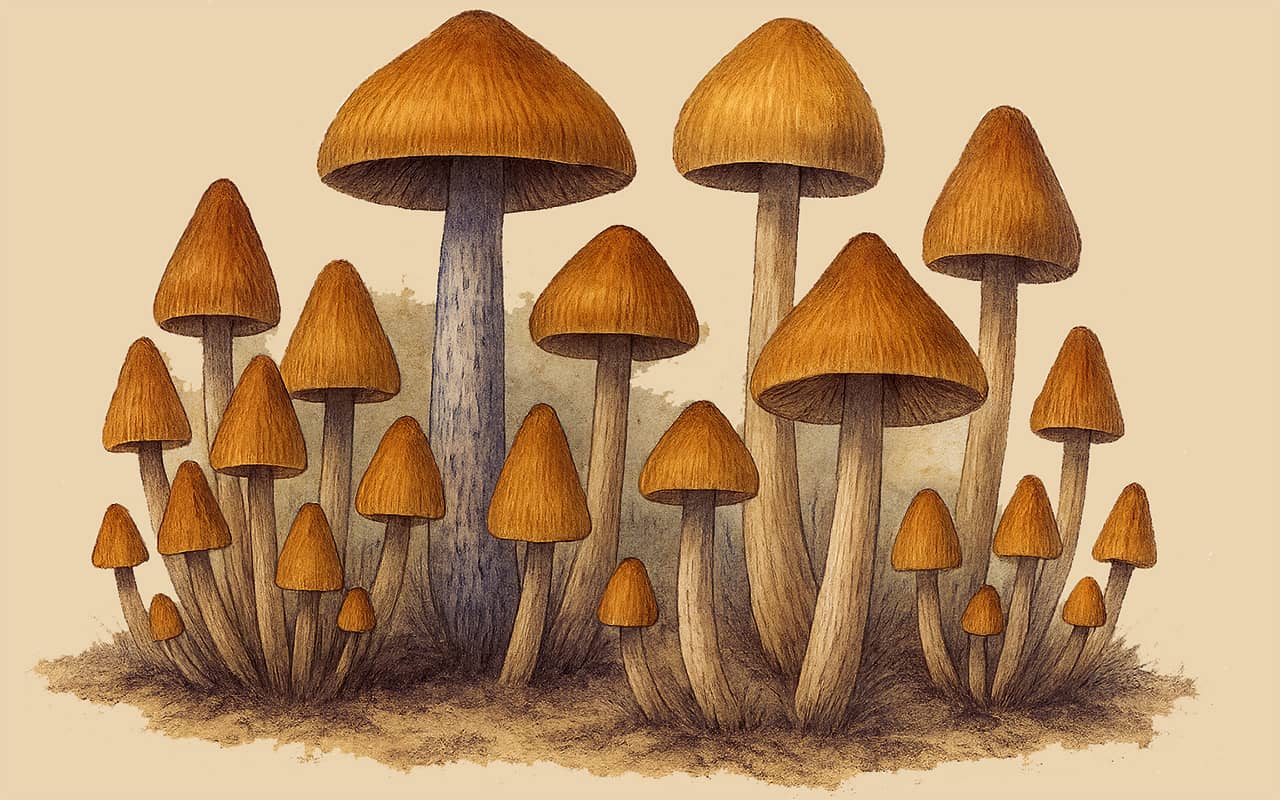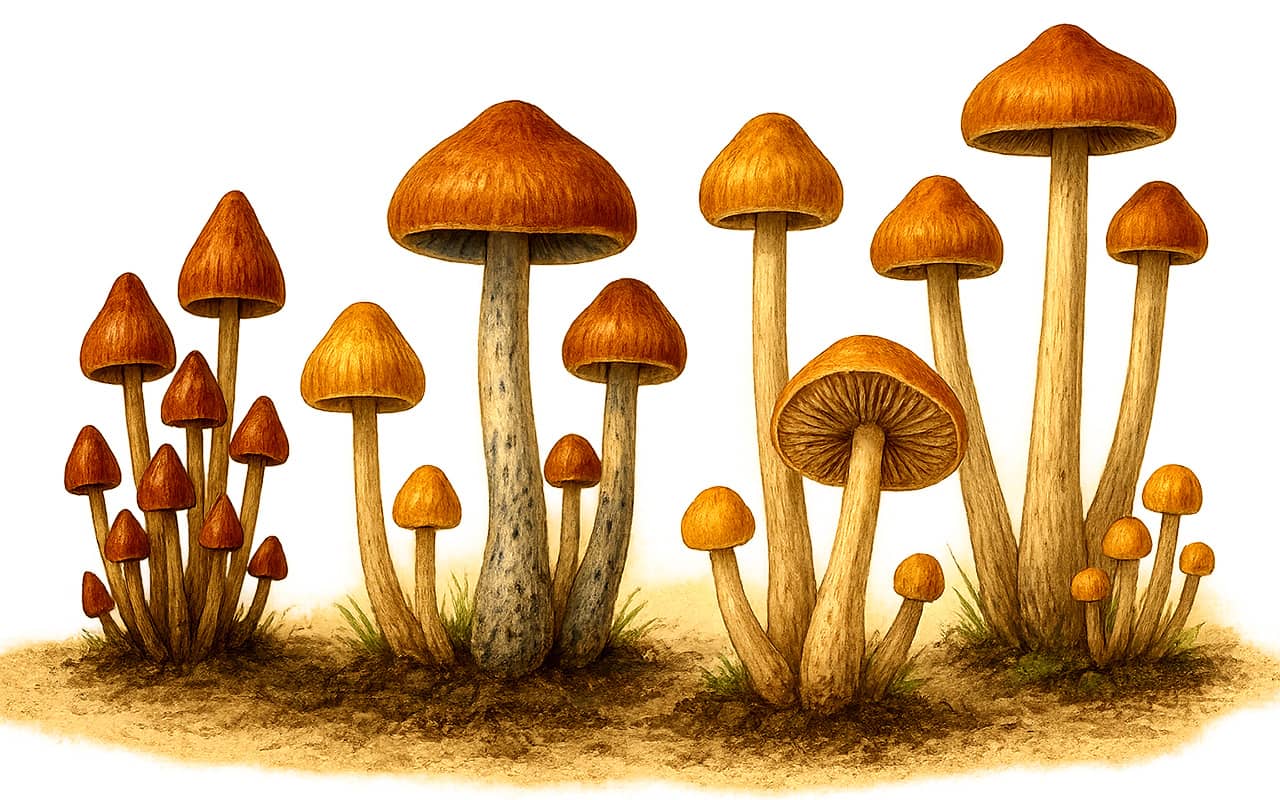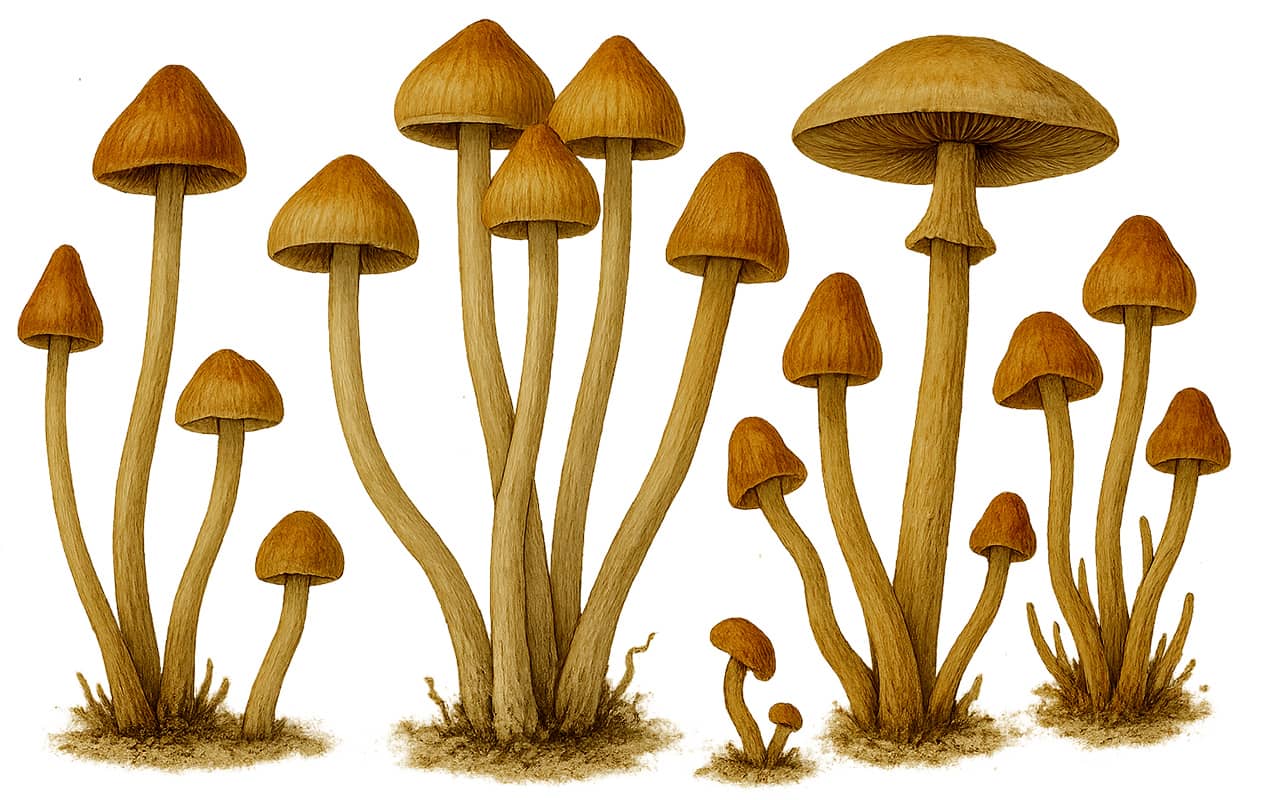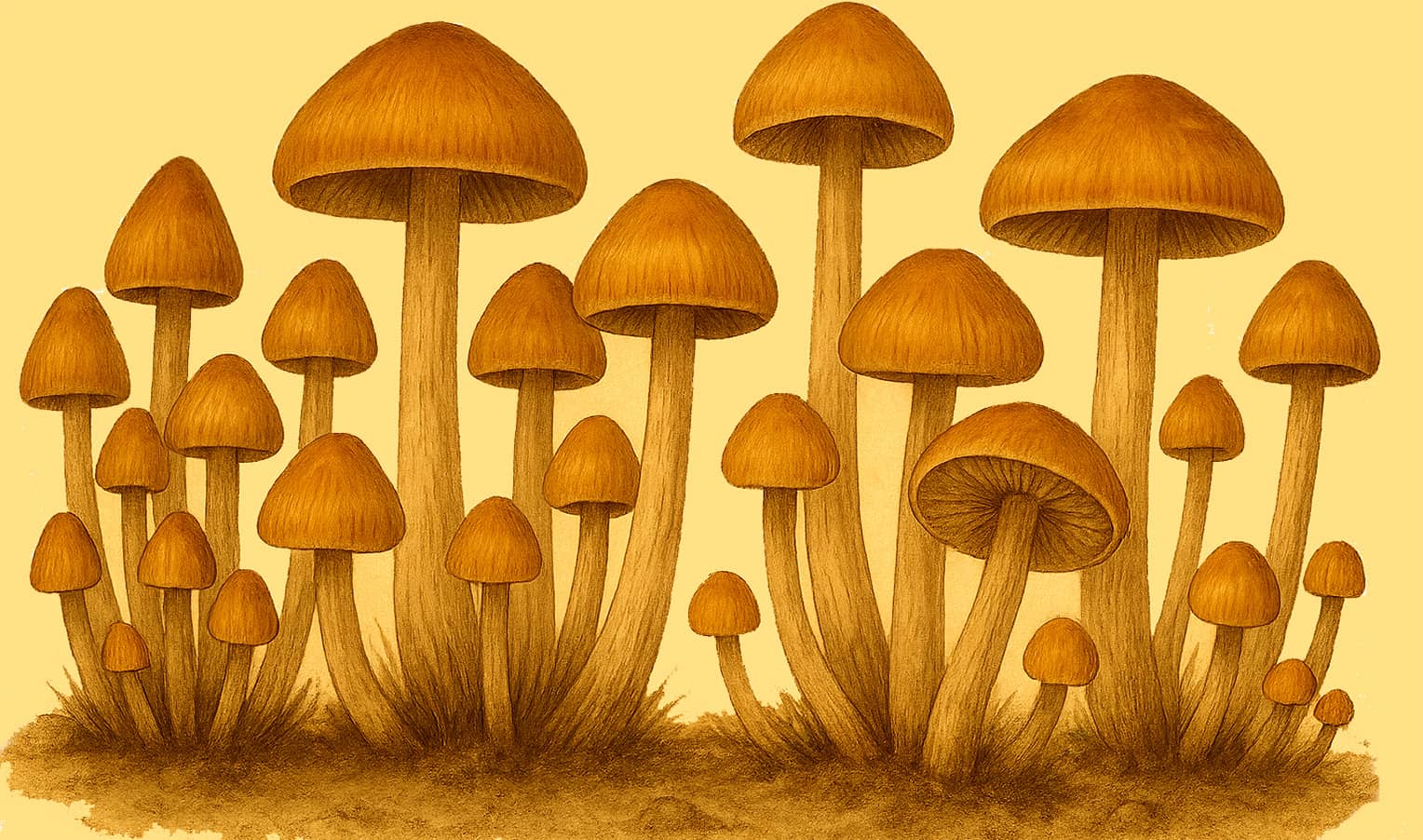Psilocybin is a naturally occurring psychoactive compound found in certain mushrooms. These mushrooms, often referred to as “magic mushrooms,” are known for inducing hallucinations, altered perception, and deep emotional experiences. Psilocybin affects serotonin receptors in the brain, temporarily changing perception, emotions, and thinking.
Historically, psilocybin mushrooms were used in religious and shamanic rituals in Central and South America. Today, they are drawing global attention from researchers due to emerging evidence of their potential use in psychotherapy to treat depression, anxiety, and PTSD.
Which mushrooms contain psilocybin?

Psilocybin is mainly found in mushrooms from the genus Psilocybe, as well as in some species from Panaeolus, Copelandia, Gymnopilus, and Pluteus. Well-known examples include Psilocybe cubensis, Psilocybe semilanceata (Liberty Cap), and Psilocybe cyanescens. These mushrooms grow in diverse climates and are often found in forests, moist soil, or grasslands. Once ingested, psilocybin is converted into psilocin — the compound responsible for psychedelic effects.
Types of psilocybin mushrooms and their characteristics

More than 180 species of psilocybin mushrooms are known today. The most common include Psilocybe cubensis, popular for easy cultivation, and Psilocybe semilanceata, one of the most potent and widely found in nature. Panaeolus cyanescens is also notable for its high psilocybin content. These mushrooms differ in appearance, potency, and native regions. When studying or cultivating, it's important to consider both the active compound levels and the specific care needs of each species.
What do hallucinogenic mushrooms look like and how to identify them?
Hallucinogenic mushrooms often have bell-shaped or conical caps that may open up as they mature. Their colors range from light to dark brown, sometimes with purple or blue hues. A distinctive feature is blue bruising on cut or damaged parts, due to psilocybin oxidation. Knowing what hallucinogenic mushrooms look like is crucial, as many toxic species can resemble them. For this reason, picking wild mushrooms without proper knowledge is very risky.
How long do psilocybin mushrooms take to grow?

The growth time of psilocybin mushrooms depends on species and conditions. For instance, Psilocybe cubensis can grow in 2–3 weeks under artificial conditions, while wild species take longer. The cycle begins with spores, followed by the development of mycelium, which produces fruiting bodies. Once the cap forms, the mushroom is considered mature.
Conclusion
Psilocybin mushrooms represent a diverse group of organisms with unique properties and promising medical applications. Understanding which mushrooms contain psilocybin, how they look, and how long they take to grow is essential for scientific study and safety. Exploring types of psilocybin mushrooms should be approached responsibly, with awareness of the legal and physiological implications.

